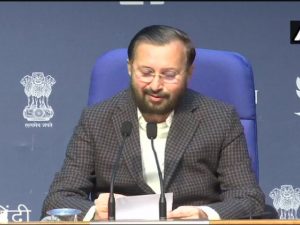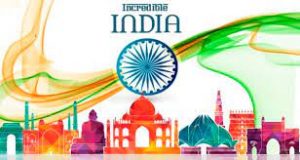Today Current Affairs: 4th April 2022 for UPSC IAS exams, State PSC exams, SSC CGL, State SSC, RRB, Railways, Banking Exam & IBPS, etc
Table of Contents
National Pension System:

Many states are demanding to restore the Old Pension Scheme and roll back the National Pension System (NPS).
- Rajasthan has said it will bring back the old pension scheme in the state from the next financial year, and Chhattisgarh is expected to follow suit.
- Governments of Kerala, Andhra Pradesh, and Assam have also formed committees regarding the old pension scheme.
National Pension System:
- The Central Government introduced the National Pension System (NPS) with effect from January 2004 (except for armed forces).
- In 2018-19, to streamline the NPS and make it more attractive, the Union Cabinet approved changes in the scheme to benefit central government employees covered under NPS.
- The NPS was launched as a way for the government to get rid of pension liabilities.
- According to a news report that cited research from the early 2000s, India’s pension debt was reaching uncontrollable levels.
- On introduction of NPS, the Central Civil Services (Pension) Rules, 1972 was amended.
- The NPS allows subscribers (government employees) to decide where they want to invest their money by contributing regularly in a pension account throughout their career.
- After retirement they can withdraw a part of the pension amount in a lump sum and use the rest to buy an annuity for a regular income.
- NPS is being implemented and regulated by PFRDA (Pension Fund Regulatory and Development Authority) in the country.
- National Pension System Trust (NPST) established by PFRDA is the registered owner of all assets under NPS.
- Features:
- The All Citizens Model of the NPS allows all citizens of India (including NRIs) aged between 18 – 70 years to join NPS.
- It is a participatory scheme, where employees contribute to their pension corpus from their salaries, with matching contributions from the government. The funds are then invested in earmarked investment schemes through Pension
- In 2019, the Finance Ministry said that Central government employees have the option of selecting the Pension Funds (PFs) and Investment Pattern.
- At retirement, they can withdraw 60% of the corpus, which is tax-free and the remaining 40% is invested in annuities, which is taxed.
- Even private individuals can opt for the scheme.
Old Pension Scheme:
- The scheme assures life-long income, post-retirement.
- Usually the assured amount is equivalent to 50% of the last drawn salary.
- The Government bears the expenditure incurred on the pension. The scheme was discontinued in 2004.
Chief Justice Of India On CBI:

Chief Justice of India N.V. Ramana calls for immediate need for the creation of an independent umbrella institution, so as to bring various central agencies like the CBI, Enforcement Directorate and the Serious Fraud Investigation Office under one roof.
- Central Bureau of Investigation (CBI), ED and other central government investigating agencies had come under deep public scrutiny.
- Its actions and inactions had raised questions regarding its credibility.
- All the institutions including the police and the investigative bodies uphold and strengthen the democratic values,” he said.
- The police and the probe agencies need to function within democratic framework as prescribed under the Constitution. Any deviation will hurt the institutions and will weaken our democracy.
- The police and the investigative agencies may have de-facto legitimacy, but yet, as institutions, they still have to gain social legitimacy.
- The umbrella body, if created under a statute, clearly defining its powers, functions and jurisdictions, will ensure parliament upholds effective accountability of these institutions.
- A single incident gets investigated by multiple agencies, often leading to dilution of evidence, contradiction indepositions, prolonged incarceration of innocents.
- The umbrella body will ensure a harmonious relationship between the State and Central agencies, given that the goal of all those organisations was to secure justice.
- The proposed umbrella body should be headed by an independent and impartial authority, appointed by a committee akin to the one which appointed the CBI Director.
- Its head could be assisted by deputies having specialisation in different domains.
- The body should be created under a statute, clearly defining its powers, functions and jurisdictions.
Hindu New Year Festival:

The President of India extended greetings to the whole nation and Indians all across the world on the occasion of Ugadi
- These festivals of the spring season mark the beginning of the traditional new year in India.
Chaitra Sukladi:
- It marks the beginning of the new year of the Vikram Samvat also known as the Vedic [Hindu] calendar.
Vikram Samvat is based on the day when the emperor Vikramaditya defeated Sakas, invaded Ujjain and called for a new era. - Under his supervision, astronomers formed a new calendar based on the luni-solar system that is still followed in the northern regions of India.
- It is the first day during the waxing phase (in which the visible side of the moon is getting bigger every night) of the moon in the Chaitra (first month of Hindu calendar).
Gudi Padwa and Ugadi:
- These festivals are celebrated by the people in the Deccan region including Karnataka, Andhra Pradesh and Maharashtra.
- The common practice in the celebrations of both the festivals is the festive food that is prepared with a mix of sweet and bitter.
- A famous concoction served is jaggery (sweet) and neem (bitter), called bevu-bella in the South, signifying that life brings both happiness and sorrows.
- Gudi is a doll prepared in Maharashtrian homes. A bamboo stick is adorned with green or red brocade to make the gudi.
- This gudi is placed prominently in the house or outside a window/ door for all to see.
- For Ugadi, doors in homes are adorned with mango leaf decorations called toranalu or Torana in Kannada.
Cheti Chand:
- Sindhis celebrate the new year as Cheti Chand. Chaitra month is called ‘Chet’ in Sindhi.
- The day commemorates the birth anniversary of Uderolal/Jhulelal, the patron saint of Sindhis.
Navreh:
- It is the lunar new year that is celebrated in Kashmir.
- It is the Sanskrit word ‘Nav-Varsha’ from which the word ‘Navreh’ has been derived.
- It falls on the first day of the Chaitra Navratri.
- On this day, Kashmiri pandits look at a bowl of rice which is considered as a symbol of riches and fertility.
Sajibu Cheiraoba:
- It is the great ritual festival of Meiteis (an ethnic group in Manipur) which is observed on the first day of Manipur lunar month Shajibu, which falls in the month of April every year.
- On the day of the festival, people arrange a joint family feast in which traditional cuisines are offered to local deities at the entrance gates of the houses.
The Merger Of Four Film Media Units:

The merger of four film media units which are the Directorate of Film Festivals (DFF), Films Division, Children’s Film Society of India (CFSI), and National Film Archive of India (NFAI) with the National Film Development Corporation (NFDC) has been announced by the Central government of India.
- The mandate to produce short films and documentaries, organising various film festivals and film preservation was transferred to the NFDC, by the Ministry of Information and Broadcasting.
- This was done with the aim of reducing the overlapping of various activities and also ensuring better utilisation of the public resources.
- The decision for the merger was taken up by the government in December 2020 and the major policy decisions related to this were done after interactions with the film industry held in Mumbai and Chennai in March 2022.
- A budgetary allocation of Rs 1304.52 crore up to the year 2026 was made by the government towards this industry for the activities that will be undertaken by the NDFC. Also, the revenues that will be generated through these activities will also be accrued to the NFDC.
Varuna Naval Exercise:

The 20th edition of the bilateral naval exercise that is named ‘Varuna’ is being conducted by India and France in the Arabian Sea from 30th March till 3rd April 2022.
- In this exercise, various units of the two navies which include submarines, ships, fighter aircraft, maritime patrol aircraft, and helicopters are participating.
- This exercise is conducted so that the participating units can sharpen and enhance their operational skills in the maritime sector.
- The participating units also look to improve their inter-operability so that they can undertake various maritime security operations.
- The units also demonstrate their commitment, as an integrated force, to the promotion of the region’s security, peace, and stability.
- The scope of this exercise has grown over the years.
- These exercises provide the navies of both nations with various opportunities to the best possible practices from each other.
- This exercise plays the role of the significant driver for interactions at the operational level between the navies of India and France.
- Also, this exercise has highlighted the shared commitment of both countries to the safety, security, and freedom of the global maritime sector.
India-Sri Lanka Maritime Deal:

India and Sri Lanka signed a Memorandum of Understanding so that a Maritime Rescue Co-ordination Centre (MRCC) can be set up by Bharat Electronics Ltd (BEL) in Colombo.
- This MoU was signed during the visit of S Jaishankar, India’s External Affairs Minister to Colombo.
- Since 23rd March, a team of the Indian Navy has been training the Navy and Air Force of Sri Lanka in helicopter operations.
- The Sri Lankan pilots are also being familiarised with the Advanced Light Helicopter of India.
- The navies of both the countries also conducted a joint exercise near Colombo. In this exercise, INS Sharda and Sri Lankan OPV Sayurala took part.
- This agreement is important for both nations as it will enhance the maritime security cooperation in the region of a part of the Indian Ocean where the rivalry between India and China has taken a centre stage. Recently, India has provided two Dornier aircraft to the Sri Lankan Air Force and a naval floating dock to the Sri Lankan Navy.
- Maritime Rescue Co-ordination Centre (MRCC) form a part of an international network that falls under the ambit of the UN’s International Maritime Organisation.
- The MRCCs monitor the sea lanes and provide quick responses to various emergencies, like vessels in distress, prevention and containing environmental disasters like oil spills, and rescue and evacuation of people.
- The Search and Rescue Region (SRR) is the responsibility of each country.
- The MRCCs work is coordinated with the Coast Guard or the Navy of each country and in India, the coordinating agency is the Coast Guard while in Sri Lanka, the Navy plays this role.
Draft National Tourism Policy:

The Draft National Tourism Policy has been prepared by the Indian Government to focus on digital, and green tourism.
- This policy has been forwarded to the state governments, industry partners, and other allied ministries for getting their feedback before the policy is sent for approval.
- Earlier, three draft strategies with roadmaps for developing Rural Tourism, promotion of Medical and Wellness Tourism, and the Meetings, incentives, conferencing, and exhibitions (MICE) Industry were formulated by the Indian tourism ministry.
- In the next 10 years, the focus will be given to the areas of digital tourism, green tourism, skilling in the hospitality sector, destination management, and supporting Micro, Small and Medium Enterprises (MSMEs) related tourism.
- This policy doesn’t deal with specific operational related issues, but it offers conditions that will help this sector.
- The overall aim of this policy is to improve the experience of the tourists who will be visiting these tourist spots.
- To improve this sector focus will also be given to the development of infrastructure.
Interest Rates Unchanged On Small savings Schemes:

The government has kept interest rates unchanged on Small savings Schemes, including NSC (National Savings Certificate) and PPF (Public Provident Fund) for the first quarter of 2022-23 (April-June) due to an elevated level of inflation.
- Small Saving Schemes are the major source of household savings in India and comprise 12 instruments.
- The depositors get an assured interest on their money.
- Collections from all small savings instruments are credited to the National Small Savings Fund (NSSF).
- Small savings have emerged as a key source of financing the government deficit, especially after the Covid-19 pandemic led to a ballooning of the government deficit, necessitating higher need for borrowings.
- Small savings instruments can be classified under three heads:
- Postal Deposits (comprising savings account, recurring deposits, time deposits of varying maturities and monthly income scheme).
- Savings Certificates: National Small Savings Certificate (NSC) and Kisan Vikas Patra (KVP).
- Social Security Schemes: Sukanya Samriddhi Scheme, Public Provident Fund (PPF) and Senior Citizens‘ Savings Scheme (SCSS).
- Interest rates on small savings schemes are reset on a quarterly basis, in line with the movement in benchmark government bonds of similar maturity.
- The rates are reviewed periodically by the Ministry of Finance.
- The Shyamala Gopinath panel (2010) constituted on the Small Saving Scheme had suggested a market-linked interest rate system for small savings schemes.
Who Was Shivkumar Swami?

The Union Minister of Home Affairs inaugurated and participated in the 115th Birthday Celebrations of Dr. Shri Shri Shri Shiva Kumaraswami & Guruvandana Mahotsava in Siddaganga Mutt, Tumkur, Karnataka.
- Shivakumara Swami of Siddhaganga Mutt in Tumkur was a revered seer of the Lingayat-Veerashaiva faith and was the Lingayat religious head of Sree Siddaganga Mutt.
- Born on 1st April, 1907, in Veerapura village of Ramanagara (Karnataka), he was well known for his philanthropic activities.
- He worked for 88 years to realize the thought of Basaveshwara and paved the way to bring equality, education and making people spiritually rich.
- In recognition of his social work, he was conferred with the third-highest civilian award, Padma Bhushan, in 2015 and the Karnataka Ratna in 2007.
- He was also conferred with an honorary degree of Doctor of Literature by Karnataka University in the year 1965.
- He founded the Sri Siddaganga Education Society Trust, which runs close to 125 educational institutions in Karnataka – from primary schools, school for the blind to colleges of arts, science, commerce and engineering.
- He was known as a “walking god” among his followers.
- He passed away in 2019.
- The term Lingayat denotes a person who wears a personal linga, an iconic form of god Shiva, on the body which is received during the initiation ceremony.
- Lingayats are the followers of the 12th-century social reformer-philosopher poet, Basaveshwara.
- Basaveshwara was against the caste system and Vedic rituals.
- The Lingayats are strict monotheists.
- They enjoin the worship of only one God, namely, Linga (Shiva).
- The word ‘Linga’ does not mean Linga established in temples, but universal consciousness qualified by the universal energy (Shakti).
- Lingayats had been classified as a Hindu subcaste called “Veerashaiva Lingayats” and they are considered to be Shaivites.
- Lingayats had distanced themselves from Hindu Veerashaivas because the latter followed the Vedas and supported the caste system, to which Basaveshwara was against.
- Veerashaivas are the followers of the five peethas (religious centers), called Pancha Peethas.
- These peethas are set up on similar lines to the four peethas set up by Adi Shankara.
Draft Indian Antarctic Bill 2022:

The government has introduced the ‘Antarctic Bill’ in the Lok Sabha, which envisages regulating visits and activities to Antarctica as well potential disputes that may arise among those present on the continent.
- The Bill is applicable to Indian citizens as well as foreign citizens.
- In October 2021, India extended its support for protecting the Antarctic environment and for co-sponsoring the proposal of the European Union for designating East Antarctica and the Weddell Sea as Marine Protected Areas (MPAs).
- Earlier, a 100-km long body of ice in Antarctica, which has been experiencing rapid melting, was formally named Glasgow after the Glasgow climate summit.
Provisions under the Bill:
- The bill has listed strict guidelines and a system of permits, which will be issued by a government-appointed committee, without which any expedition or individual will not be allowed to enter Antarctica.
- The bill has provision to establish a committee on Antarctic governance and environmental protection to monitor, implement and ensure compliance with the relevant international laws, emissions standards and rules of protection.
- The Bill further prohibits drilling, dredging, excavation or collection of mineral resources or even doing anything to identify where such mineral deposits occur.
- The only exception is for scientific research with a permit.
- There will be strict prohibition on damaging native plants, flying or landing helicopters or operating vessels that could disturb birds and seals, using firearms that could disturb the birds and animals, remove soil or any biological material native to Antarctica, engage in any activity that could adversely change the habitat of birds and animals, or harm them.
- Introduction of animals, birds, plants or microscopic organisms that are not native to Antarctica are also prohibited.
Violators can face imprisonment as well as penalties. - The Bill also provides for Indian tour operators to be able to operate in Antarctica after acquiring a permit.
- There are 40 permanent research stations in Antarctica of which two – Maitri and Bharati — are Indian.




